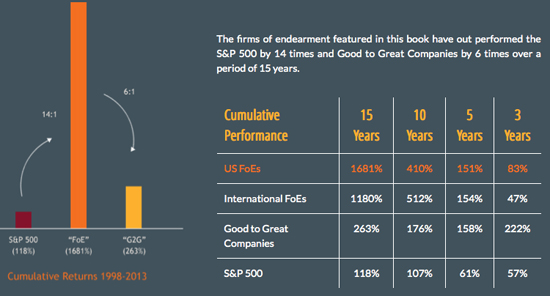A company fueled by passion and purpose, while creating shared value by engaging with its stakeholders, is a “firm of endearment,” according to the authors of the book of the same name.
A firm of endearment, or purpose-driven company, aligns stakeholder interests with business strategy and acts in positive ways that stakeholders recognize, admire and, in many cases, love. The book, “Firms of Endearment,” outlines eight rules to create such a company — one that is not only successful, but has the real potential to change the world.
For companies that are not currently purpose-driven companies but aspire to be, these rules can serve as a guide to affecting powerful organizational — and sustainable — change.
The book features 22 public firms, 29 private firms and 15 non-U.S. firms of endearment, including two inspiring examples: Costco and Southwest Airlines.
Costco, ranked the “Happiest Company in the World” for caring about its employees, “recognizes that in the long run, the interests of employees mirror those of the company.” By paying its workers above the industry standard, Costco experiences lower employee turnover, higher productivity and better customer service than industry peers, which ultimately increases its profits.
Southwest Airlines fosters stakeholder inclusiveness, which positively impacts company performance, innovation and community engagement. For example, it hosts an annual Diversity Summit where executives, human resources professionals and community leaders unite to discuss opportunities and challenges in diversity and inclusion, share ideas and network with others to understand diverse perspectives.
If Southwest wants “loving employees and loving communities, that really is a simple equation: time = love,” said Jeff Lamb, Southwest’s executive vice president and chief people and administrative officer, at the Diversity Summit 2012. In other words, if Southwest’s purpose is to create a welcoming environment for employees and communities, it must invest time in stakeholder engagement.
Along the same lines is the GameChangers 500 list created by Andrew Hewitt. It’s a list of the world’s top purpose-driven organizations using “business as force for good.” He, too, discusses a model for building “force-for-good” businesses that maximize their positive impacts rather than their profit.
This model includes nine categories that translate into “badges” companies can earn as achievement of success in this new space. The badges are then organized into three sections: why you are in business, how you run your business and what your business offers. All companies are eligible, including nonprofits, for-profits and newly established hybrids such as benefit corporations. The intent is to define organizations by their best practices in making the world a better place rather than their legal structure, and reward organizations that make their own rules on how they should conduct business on the basis of stakeholder engagement.
BrownFlynn has seen similar impacts of positive organizational change through stakeholder engagement with its clients. For instance, by engaging with stakeholders through interviews, surveys and focus groups, Layne Christensen reframed its vision from a “services provider” to a “solutions provider,” based on the feedback it received from valued customers, suppliers and employees. Christensen’s newly created “One Vision” is “to be the leading solutions provider to the world of essential natural resources — water, mineral and energy.” Through stakeholder engagement, the company’s focus shifted from just fixing a problem with an existing service to how it can collaborate with its stakeholders to solve a problem for long-term sustainability.
Another example is Fairmount Minerals, which holds Appreciative Inquiry Summits every three years with hundreds of stakeholders, including Fairmount family members, customers, suppliers and community members. The AI Summits began in 2005, when chief financial officer Jenniffer Deckard wanted to embed sustainability throughout the organization. The summits have resulted in a more engaged workforce, product innovation, renewable energy design in facilities, the discovery of new markets, and the “top corporate citizen” award from the United States Chamber of Commerce in 2007.
So what are the benefits to companies shifting their mentality from profit-driven to purpose-driven? The chart below, from the Firms of Endearment website, shows that these particular firms — among them 3M, Disney, REI, New Balance, BMW and IKEA — consistently have outperformed the S&P 500 by 14 times, and Good to Great Companies by six times over a period of 15 years.

But again, it’s not just about returns. Excellent brand reputation and loyalty, investor relations and general employee satisfaction are all important qualities of a successful and sustainable business — qualities that are not earned solely by the bottom line. But, they can all be gained by effective stakeholder engagement.
The Guardian provides a helpful guide for stakeholder engagement if you’re not quite sure where to start. True stakeholder engagement often leads to enlightenment, which is what every successful company should seek in order to sustain itself well into the future.



